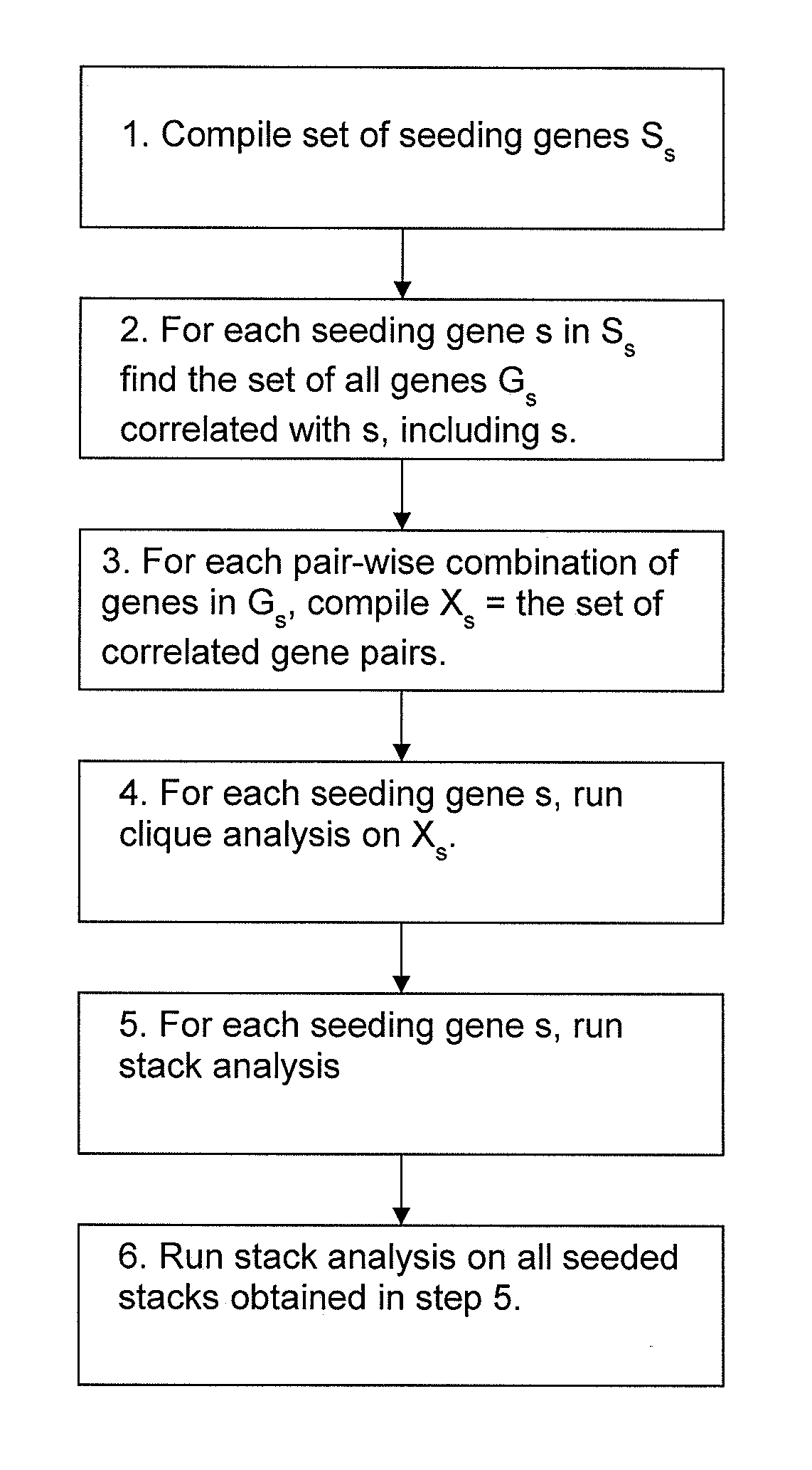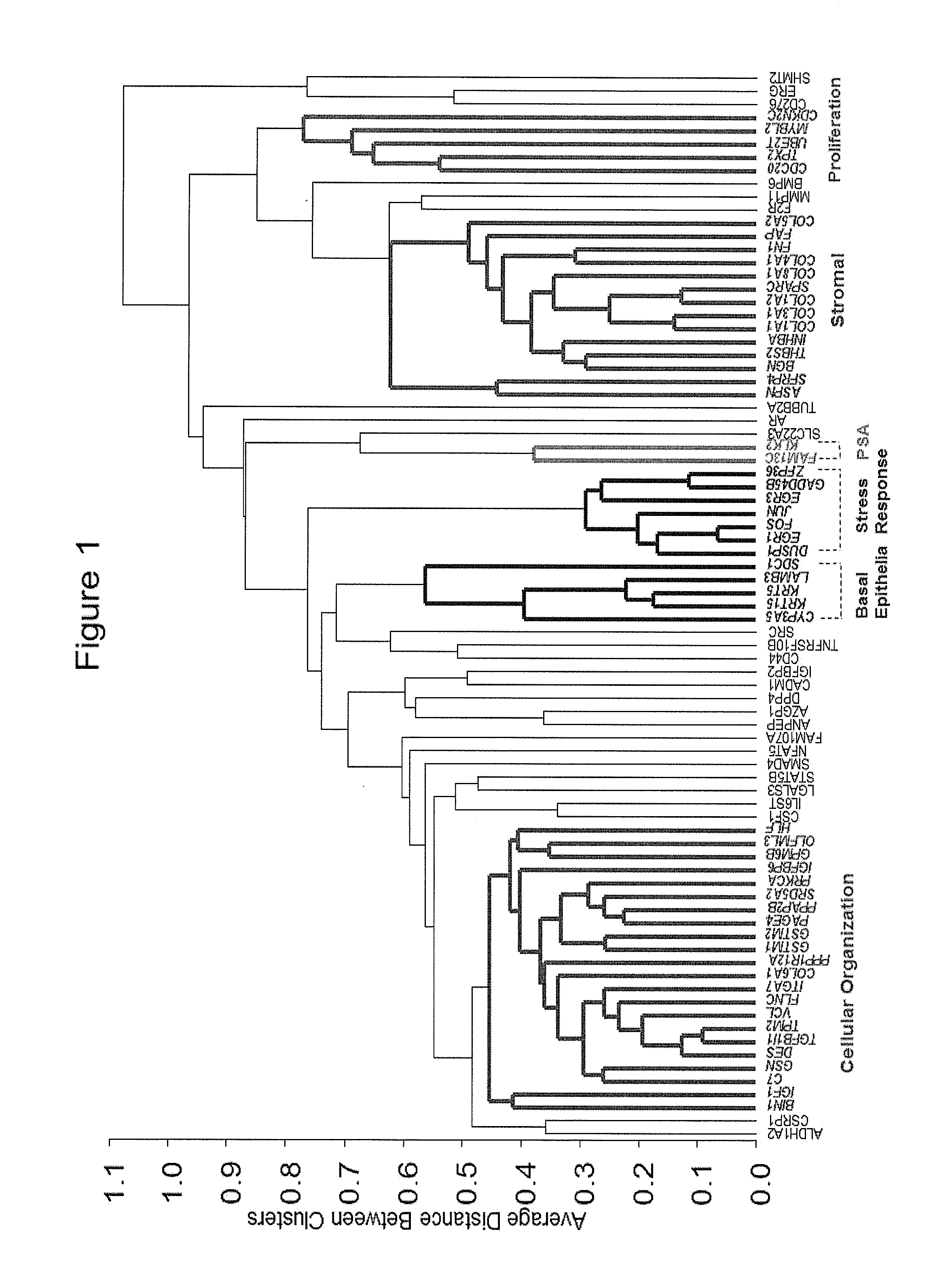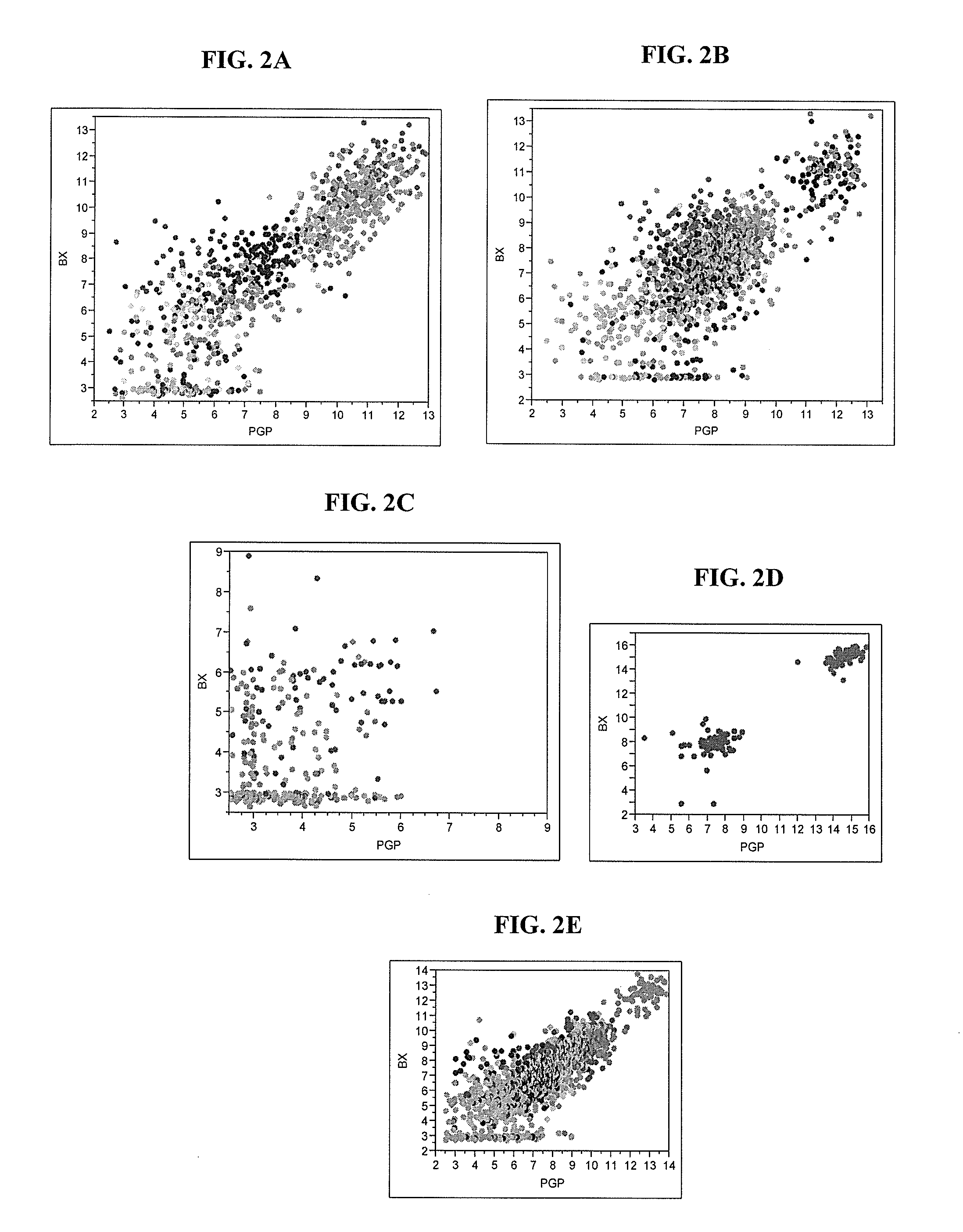Gene Expression Profile Algorithm and Test for Determining Prognosis of Prostate Cancer
a gene expression profile and prostate cancer technology, applied in the field of molecular diagnostic assays, can solve the problems of lack of reproducibility, lack of adequate prognostic tools, and over-treatment of prostate cancer at a cost of money and toxicity
- Summary
- Abstract
- Description
- Claims
- Application Information
AI Technical Summary
Benefits of technology
Problems solved by technology
Method used
Image
Examples
example 1
Selection of 81 Genes for Algorithm Development
[0148]A gene identification study to identify genes associated with clinical recurrence, biochemical recurrence and / or death from prostate cancer is described in U.S. Provisional Application Nos. 61 / 368,217, filed Jul. 27, 2010; 61 / 414,310, filed Nov. 16, 2010; and 61 / 485,536, filed May 12, 2011, and in U.S. Pub. No. 20120028264, filed Jul. 25, 2011, and published Feb. 2, 2012 (all of which are hereby incorporated by reference). RT-PCR analysis was used to determine RNA expression levels for 732 genes and reference genes in prostate cancer tissue and surrounding normal appearing tissue (NAT) in patients with early-stage prostate cancer treated with radical prostatectomy. Genes significantly associated (p<0.05) with clinical recurrence-free interval (cRFI), biochemical recurrence-free interval (bRFI), prostate cancer-specific survival (PCSS), and upgrading / upstaging were determined.
[0149]From the genes that were identified as being assoc...
example 2
Algorithm Development Based on Data from a Companion Study
[0161]The Cleveland Clinic (“CC”) Companion study consists of three patient cohorts and separate analyses for each cohort as described in Table 2. The first cohort (Table 2) includes men with low to high risk (based on AUA criteria) prostate cancer from Gene ID study 09-002 who underwent RP at CC between 1987 and 2004 and had diagnostic biopsy tissue available at CC. Cohorts 2 and 3 include men with clinically localized Low and Intermediate Risk (based on AUA criteria) prostate cancer, respectively, who might have been reasonable candidates for active surveillance but who underwent radical prostatectomy (RP) within 6 months of the diagnosis of prostate cancer by biopsy. The main objective of Cohort 1 was to compare the molecular profile from biopsy tissue with that from radical prostatectomy tissue. The main objective of Cohorts 2 and 3 was to develop a multigene predictor of upgrading / upstaging at RP using biopsy tissue in l...
example 3
Clique Stack Analysis to Identify Co-Expressed Genes
[0172]The purpose of the gene clique stacks method described in this Example was to find a set of co-expressed (or surrogate) biomarkers that can be used to reliably predict outcome as well or better than the genes disclosed above. The method used to identify the co-expressed markers is illustrated in FIG. 4. The set of co-expressed biomarkers were obtained by seeding the maximal clique enumeration (MCE) with curated biomarkers extracted from the scientific literature. The maximal clique enumeration (MCE) method [Bron et al, 1973] aggregates genes into tightly co-expressed groups such that all of the genes in the group have a similar expression profile. When all of the genes in a group satisfy a minimal similarity condition, the group is called a clique. When a clique is as large as possible without admitting any ‘dissimilar’ genes into the clique, then the clique is said to be maximal. Using the MCE method, all maximal cliques are...
PUM
| Property | Measurement | Unit |
|---|---|---|
| Level | aaaaa | aaaaa |
Abstract
Description
Claims
Application Information
 Login to View More
Login to View More - R&D
- Intellectual Property
- Life Sciences
- Materials
- Tech Scout
- Unparalleled Data Quality
- Higher Quality Content
- 60% Fewer Hallucinations
Browse by: Latest US Patents, China's latest patents, Technical Efficacy Thesaurus, Application Domain, Technology Topic, Popular Technical Reports.
© 2025 PatSnap. All rights reserved.Legal|Privacy policy|Modern Slavery Act Transparency Statement|Sitemap|About US| Contact US: help@patsnap.com



